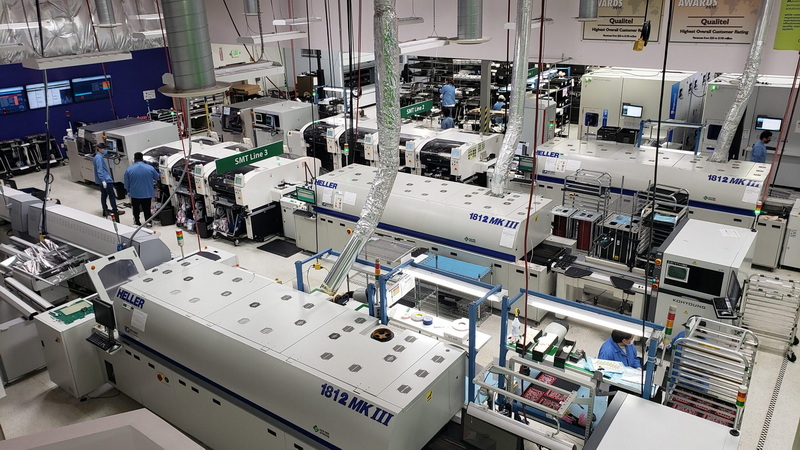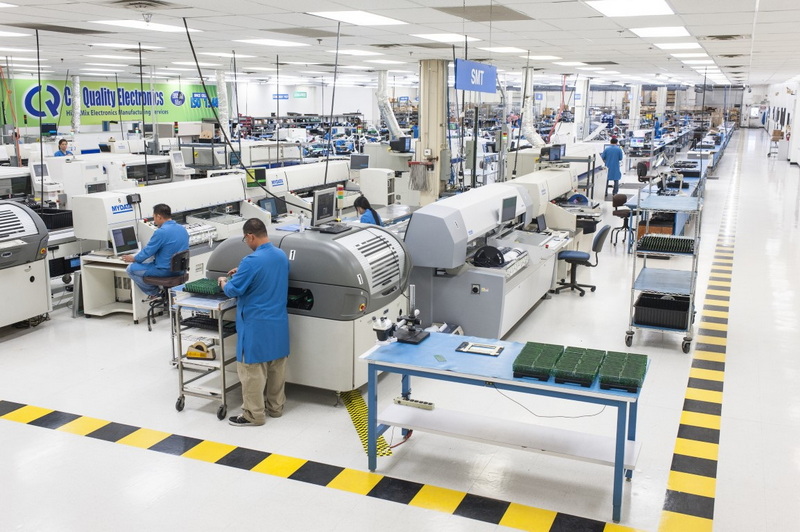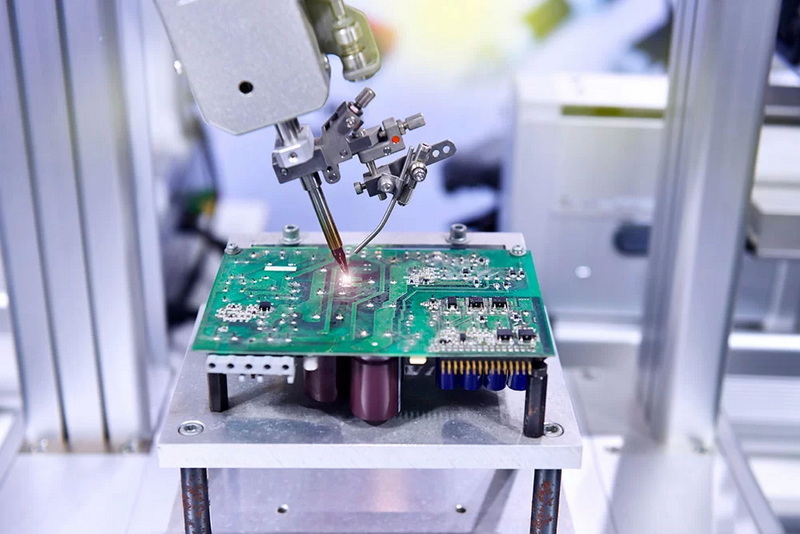Content Menu
● Introduction to SMT Stencil Cleaning Machines
>> Types of SMT Stencil Cleaning Machines
● Benefits of Using SMT Stencil Cleaning Machines
>> Efficiency and Speed
>> Cost-Effectiveness
>> Environmental Benefits
>> Improved Quality and Reliability
● Comparison of Cleaning Methods
● Choosing the Right SMT Stencil Cleaning Machine
● Advanced Features in Modern SMT Stencil Cleaning Machines
● Case Studies: Successful Implementation of SMT Stencil Cleaning Machines
● Future Developments in SMT Stencil Cleaning Technology
● Conclusion
● FAQs
>> 1. What are the main types of SMT stencil cleaning machines?
>> 2. How do ultrasonic stencil cleaning machines work?
>> 3. What are the environmental benefits of using pneumatic stencil cleaning machines?
>> 4. How do fully automatic stencil cleaning machines improve product quality?
>> 5. Why is regular cleaning of SMT stencils important?
In the realm of Surface Mount Technology (SMT), maintaining the cleanliness of stencils is crucial for ensuring the quality and reliability of printed circuit boards (PCBs). SMT stencil cleaning machines have become indispensable tools in this process, offering numerous benefits over traditional manual cleaning methods. This article will delve into the advantages of using an SMT stencil cleaning machine, exploring its efficiency, cost-effectiveness, environmental benefits, and more.

Introduction to SMT Stencil Cleaning Machines
SMT stencil cleaning machines are designed to remove residues such as solder paste, adhesives, and other contaminants from stencils used in PCB manufacturing. These machines can be categorized into several types, including ultrasonic, pneumatic, and fully automatic systems, each with its unique features and advantages.
Types of SMT Stencil Cleaning Machines
1. Ultrasonic Stencil Cleaning Machines: These machines use ultrasonic vibrations to effectively clean stencils. They are efficient, require minimal solvent, and are cost-effective compared to fully automatic cleaners. Ultrasonic cleaners are versatile and can be used with various solvents, making them suitable for different types of solder pastes and adhesives. For instance, the Sawa Ultrasonic Portable Stencil Cleaners utilize ultrasonic vibrations to clear stencil apertures of unwanted solder paste, offering a low-cost system with minimal solvent usage.
2. Pneumatic Stencil Cleaning Machines: Pneumatic machines utilize compressed air to clean stencils, eliminating the risk of fire hazards and reducing environmental impact. They are efficient in cleaning small apertures and offer significant cost savings by recycling cleaning fluids. The CNSMT full pneumatic stencil cleaning machine is designed to clean solder paste and other residues efficiently, maximizing resource use and reducing cleaning costs.
3. Fully Automatic Stencil Cleaning Machines: These machines provide a comprehensive cleaning process, including cleaning, rinsing, and drying. They are ideal for high-volume production but require more space and resources compared to ultrasonic or pneumatic systems. The SMT Auto Aqueous Stencil Cleaning Machine ICT-800, for example, completes the entire cleaning process in one chamber, ensuring stability and reliability.
Benefits of Using SMT Stencil Cleaning Machines
Efficiency and Speed
SMT stencil cleaning machines significantly enhance the cleaning process by reducing the time required to clean stencils. Ultrasonic cleaners can complete the cleaning process in as little as 1-3 minutes, while fully automatic machines can take longer but offer a more comprehensive cleaning cycle. Pneumatic machines also provide quick cleaning, especially for stencils with small apertures, which are challenging to clean manually.
Cost-Effectiveness
The cost of using an SMT stencil cleaning machine is generally lower than manual methods or fully automatic systems. Ultrasonic cleaners are particularly cost-effective, requiring minimal solvent usage and reducing waste disposal costs. Pneumatic machines also offer cost savings by recycling cleaning fluids and minimizing solvent consumption.
Environmental Benefits
SMT stencil cleaning machines contribute to a more environmentally friendly cleaning process. They reduce solvent usage and waste, minimizing the impact on air quality and employee health. Pneumatic machines, in particular, are designed to operate in a closed system, reducing environmental pollution and solvent exposure.
Improved Quality and Reliability
Clean stencils are essential for accurate solder paste application, which directly affects the quality of PCBs. SMT stencil cleaning machines ensure that stencils are thoroughly cleaned, reducing defects such as insufficient solder or solder bridging. This leads to improved product reliability and reduced rework rates.

Comparison of Cleaning Methods
| Cleaning Method | Efficiency | Cost | Environmental Impact |
| Manual Cleaning | Low | High | High |
| Ultrasonic | High | Low | Low |
| Pneumatic | High | Low | Low |
| Fully Automatic | High | High | Moderate |
Choosing the Right SMT Stencil Cleaning Machine
When selecting an SMT stencil cleaning machine, several factors should be considered:
- Type of Solder Paste: Different machines are suited for various types of solder pastes. Ultrasonic cleaners are versatile, while pneumatic machines are ideal for stubborn residues.
- Production Volume: For high-volume production, fully automatic machines may be necessary, while smaller operations might prefer ultrasonic or pneumatic systems.
- Space and Resources: Consider the available space and resources, as fully automatic machines require more area and utilities.
Advanced Features in Modern SMT Stencil Cleaning Machines
Modern SMT stencil cleaning machines often come with advanced features that enhance their performance and efficiency:
- Automatic Frequency Tracking: Ultrasonic machines can automatically adjust frequencies to optimize cleaning power, ensuring consistent results.
- Real-Time Monitoring: Some machines, like the ICT-800, offer real-time monitoring of cleaning processes, allowing for precise control over cleaning parameters.
- Environmental Protection: Many machines are designed with environmental protection in mind, featuring closed systems that recycle cleaning agents and reduce waste.
Case Studies: Successful Implementation of SMT Stencil Cleaning Machines
Several companies have successfully integrated SMT stencil cleaning machines into their production lines, achieving significant improvements in efficiency and product quality. For instance, a leading PCB manufacturer reported a 30% reduction in rework rates after implementing ultrasonic stencil cleaning, while another company saw a 25% decrease in solvent consumption by using a pneumatic system.
Future Developments in SMT Stencil Cleaning Technology
As technology continues to evolve, SMT stencil cleaning machines are expected to become even more sophisticated. Future developments may include:
- Artificial Intelligence Integration: Machines could be equipped with AI to optimize cleaning parameters based on real-time data, further improving efficiency and quality.
- Sustainable Materials: The use of eco-friendly materials in machine construction and cleaning agents will become more prevalent, aligning with global environmental goals.
- Compact Designs: Machines will be designed to be more compact and versatile, allowing for easier integration into smaller production lines.
By embracing these advancements, manufacturers can continue to enhance their PCB production processes while minimizing environmental impact.
Conclusion
SMT stencil cleaning machines offer numerous benefits, including efficiency, cost-effectiveness, environmental sustainability, and improved product quality. By choosing the right type of machine based on specific needs, manufacturers can enhance their PCB production processes, reduce costs, and contribute to a cleaner environment.

FAQs
1. What are the main types of SMT stencil cleaning machines?
SMT stencil cleaning machines are primarily categorized into ultrasonic, pneumatic, and fully automatic systems. Each type has its unique advantages and is suited for different cleaning requirements.
2. How do ultrasonic stencil cleaning machines work?
Ultrasonic machines use high-frequency vibrations to remove solder paste and other residues from stencils. They are efficient, require minimal solvent, and are cost-effective.
3. What are the environmental benefits of using pneumatic stencil cleaning machines?
Pneumatic machines operate in a closed system, reducing solvent consumption and environmental pollution. They also eliminate fire hazards by using compressed air instead of electricity.
4. How do fully automatic stencil cleaning machines improve product quality?
Fully automatic machines provide a comprehensive cleaning process, ensuring that stencils are thoroughly cleaned and dried. This leads to improved solder paste application accuracy and reduced PCB defects.
5. Why is regular cleaning of SMT stencils important?
Regular cleaning of SMT stencils is crucial to prevent solder paste buildup, which can lead to stencil deformation and decreased printing accuracy. Clean stencils ensure consistent product quality and reduce rework rates.




















